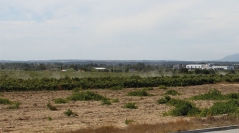

 Comptes Rendus Palevol
12 (1) - Pages 31-43
Comptes Rendus Palevol
12 (1) - Pages 31-43Direct evidence of agriculture in Early Neolithic Portugal is almost non-existent, so there are very disparate estimates of the role played by agriculture during the period. Recent excavations at Cortiçóis, a newly discovered Early Neolithic site in central Portugal, revealed the first recognizable sickle implements and therefore relevant artefactual evidence of agricultural practices. These are typologically similar to Andalusian and Valencian sickles, reflecting a common technological tradition in southern Iberia during the period (c. 5600–4000 cal BC). Based on this fact, we summarize all available evidence for early agriculture in central Portugal and compare it with the Andalusian and Valencian records in order to tentatively present a model to be tested locally in future research.
Sickle typologies, Use-wear, Agriculture, Early Neolithic, Portugal